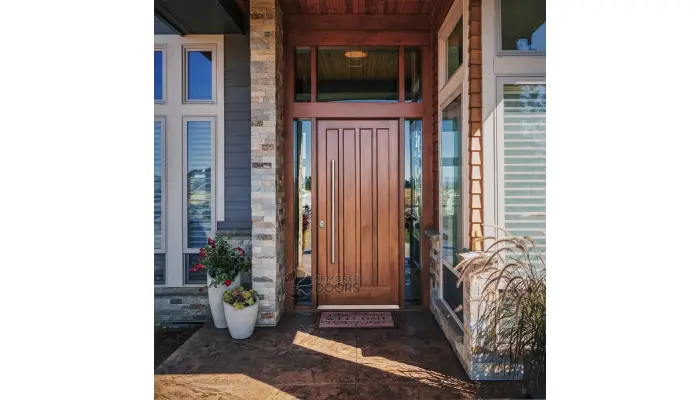
Understanding the Importance of a Residential Safe Room in Modern Homes
A safe room is essentially a fortified space within your home, meant to provide shelter during dangerous situations like break-ins or severe weather. Its importance can’t be overstated—safe rooms offer personal safety, allowing you to retreat when threats arise. They can also serve as a central hub for emergency supplies and reduce anxiety among residents in unsafe neighborhoods or areas prone to disasters. Constructing a safe room involves important design choices, such as location and materials used. As security becomes more vital in our daily lives, investing in a safe room might not only enhance peace of mind but can even add value to your property.
1. What is a Residential Safe Room?
A residential safe room is a specially fortified area within a home that provides a secure retreat during emergencies. These rooms are designed to protect occupants from various threats, including home invasions, severe weather, or other crisis situations. Safe rooms can either be standalone structures in the yard or integrated into the existing layout of a house. They typically feature reinforced walls, secure locks, and essential communication systems to keep occupants safe and informed. For example, a family might build a safe room in a central location, equipped with sturdy doors and emergency supplies, ensuring that everyone has a safe place to go in case of danger. Overall, safe rooms serve as a crucial element in modern home security.
2. Key Benefits of Safe Rooms
Safe rooms provide several key benefits that enhance the safety and security of modern homes. Firstly, they offer personal safety during emergencies, creating a secure area for occupants to retreat to in the event of a home invasion or severe weather. This assurance of physical safety is invaluable, especially for families living in areas with higher crime rates or prone to natural disasters.
Another significant advantage is emergency preparedness. Safe rooms can serve as a central location for storing essential supplies such as food, water, first aid kits, and communication devices. This means that during a crisis, families can quickly access what they need without having to scramble around the house.
Additionally, having a designated safe space can provide psychological comfort. Knowing that there is a fortified area to go to can help reduce anxiety and fear, especially for children and vulnerable family members. This sense of security can significantly improve the overall well-being of residents.
Furthermore, homes equipped with well-designed safe rooms may experience an increase in property value. As safety becomes a priority for many buyers, the presence of a safe room can make a home more appealing in the real estate market. Insurance benefits also play a role, as some providers may offer discounts for homes with fortified areas, making them a financially sound investment.
In summary, safe rooms not only enhance physical safety but also contribute to emergency preparedness, psychological comfort, increased property value, and potential insurance savings.
- Enhanced protection against severe weather events
- Increased home safety during break-ins
- Family emergency preparedness
- Increased property value and appeal
- Insurance benefits and potential discounts
- Peace of mind for residents
- Safe storage for valuables and important documents
3. Essential Design Features for Safe Rooms
A well-designed safe room is crucial for maximizing its effectiveness during emergencies. First, the location matters significantly; it should be situated in a central part of the home, away from windows and external doors. This minimizes the risk of break-ins and offers better protection during severe weather.
Construction materials play a vital role in the room’s security. Walls should ideally be reinforced with concrete or steel to withstand forced entry or debris from storms. Additionally, the door must be solid, fitted with high-security locks that prevent unauthorized access.
Ventilation is another important feature. Even in a crisis, occupants need fresh air. Incorporating vents or air filtration systems can enhance comfort and safety. Communication tools, such as a landline phone or a battery-operated radio, are essential for staying informed during emergencies.
Accessibility cannot be overlooked. The safe room should be easily reachable by all household members, including children and the elderly, ensuring that everyone knows how to get there quickly.
Finally, consider the size and comfort of the room. It should be spacious enough to accommodate all members of the household, allowing for storage of emergency supplies like food, water, and first aid kits. A well-thought-out design can make a significant difference in how safe and secure residents feel during an emergency.
4. Safety Statistics and Expert Insights
Statistics reveal an alarming trend: homes without security measures face a significantly higher risk of break-ins. The U.S. Department of Justice indicates that these residences are almost three times more likely to be targeted. This stark reality underscores the importance of incorporating a safe room into modern homes as a crucial line of defense.
Experts advocate for families to develop comprehensive emergency plans that include safe room strategies, especially in regions susceptible to severe weather or civil unrest. For instance, communities affected by tornadoes often see a rise in safe room installations, as these fortified spaces provide vital shelter during intense storms.
Surveys consistently show that homeowners place a high priority on security features, with many considering safe rooms an essential addition. In fact, a notable percentage of prospective buyers express that the presence of a safe room can significantly influence their purchasing decisions. This growing awareness of safety is transforming how we view residential security, making safe rooms not just a luxury, but a wise investment for peace of mind.
5. Safe Rooms in Modern Home Designs
Safe rooms are becoming essential in modern home designs, particularly in areas vulnerable to natural disasters or crime. Architects are now incorporating these fortified spaces into new constructions, ensuring they blend seamlessly with the overall aesthetic of the home. For instance, a safe room can be designed as a cozy study or a stylish pantry, maintaining the home’s visual appeal while providing security.
The layout of these rooms is crucial; they are often strategically placed in the center of the house, away from windows and external doors, to maximize safety. High-quality materials, such as reinforced concrete or steel doors, offer protection against various threats. Moreover, many designs now include additional features like ventilation systems and communication devices, making them functional as well as secure.
6. Community Resources for Safe Room Education
Communities across the country are recognizing the importance of safe rooms, and many are offering resources to educate homeowners. Local governments and emergency management agencies often host workshops and seminars on how to plan and build safe rooms. These events provide valuable information on design options, construction materials, and safety protocols.
In some regions, especially those prone to severe weather, organizations collaborate with architects and safety experts to create informational guides. These guides can be accessed online or at community centers, detailing best practices for safe room construction. Additionally, neighborhood associations may facilitate group discussions or invite speakers to share their experiences with safe rooms.
Resource URL:



